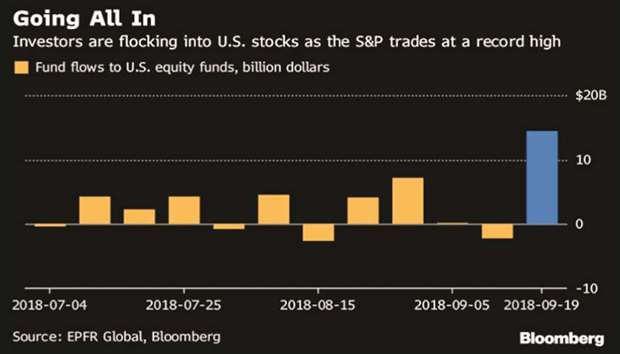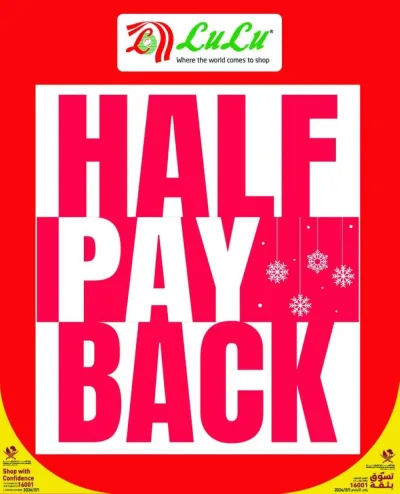The bulls have regained control on the American equity market. The S&P 500 Index capped a second weekly advance, ending the five days less than two points away from its all-time high. Investors plowed $38bn into US stock exchange-traded funds through Thursday, on pace for the best weekly inflow on record. Some $10.9bn alone was poured into the biggest ETF that tracks the equity benchmark.
Investors put $14.5bn into US equity funds in the week ending September 19, according to EPFR Global data, the most since March.
Part of the surge in inflows is due to the revision to the Global Industry Classification Standard.
The rally in US equities has defied a chorus of calls for caution as investors looked past escalating tension over trade and a spike in 10-year Treasury yields to levels that roiled markets earlier this year.
Not even the near-certainty that the Federal Reserve will lift benchmark rates next week slowed an advance that has the S&P 500 on pace for its best quarter since the heady days of 2013.
“If the economy is truly doing well, investors are willing to be in equities despite higher interest rates,” Patrick Palfrey, equity strategist at Credit Suisse Group AG, said by phone. “We don’t see the market euphoria seen in late January. The stocks are rising for the right reason.”
The S&P 500 rose 0.9% to 2,929.67 in the five days through Friday. The Dow Jones Industrial Average advanced 589 points to 26,743.50, ending at an all-time high. It was the last of the major indexes to reclaim records set in January.
Technology shares lagged behind, with the Nasdaq indexes recording slight declines. There are plenty of reasons for optimism. US companies posted two quarters of stellar earnings, and the economy is advancing at the fastest pace in four years. Just this week, indicators from a manufacturing purchasing managers’ index that beat estimates to a decline in unemployment applications suggested the world’s largest economy is still accelerating rapidly, while measures of inflation remain muted.
“It’s all about growth,” said Michael Antonelli, an institutional equity sales trader and managing director at Robert W Baird & Co. “We are not in a euphoria stage. A strong market rally is a reflection of strengthening economic fundamentals.”
Still, the Fed looms. The central bank is all but certain to lift borrowing costs and investors will scrutinise commentary for signs that it thinks the economy is rising fast enough to warrant another increase later this year.
While next week’s anticipated hike has been well- telegraphed, a surge in 10-year yields in January ended one of the most torrid stretches of the bull market. Back then, nascent signs of inflation raised concern that the Fed would have to accelerate the pace of its hikes. This time, there’s little indication that will happen.
That doesn’t mean the market can keep climbing, according Aleksandar Timcenko, a strategist at Sanford Bernstein & Co.
“To some extent there was the sugar high from the fiscal stimulus and the tax reform,” Timcenko said by phone. “That is essentially a one-time injection. Growth is solid, market fundamentals are solid. But for 2019, we’re not as optimistic as our peers.”



